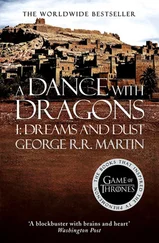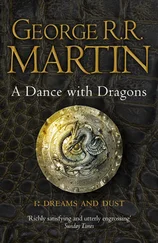In the clamorous throng people bend over piles of luggage, lurking like exotic fish on the ooze of the ocean floor; they exchange words that are inaudible amid the hubbub, mutely moving their lips. Others resting their heads against their suitcases gaze at little country stores, at skinny oxen in harness, at a ramshackle truck rattling along a sandy road, yet they do not forget about the bags heaped around them which every so often they must raise their eyelids to count. Their dreams are as unsteady and unsure as the steps of a tightrope walker. At the sound of the loudspeaker they fall, arms flapping, but they do not wake. Staring at green hills and the dry grasses of the steppe, they listen without emotion and without comprehension to announcements about the arrival at various platforms of trains on which they will not leave. Their alien dreams are intertwined with the dreams of this place like warp and weft. Without the partial and hesitant presence of these dreamers the whole would not be complete. In the place of Kazakhstan, Transylvania and at many other points of the city, gaping holes would open up.
This is also the best place in the world for insomniacs, a true sanatorium. For at the station night never falls; evening turns at once into morning, no one knows when. Only here is it possible to look for hope even at the latest hour, to find it and squander it as one sees fit and then hide safely till night outside has passed. There are many insomniacs here. It is time to reveal that it was for them the stations were built. If the insomniacs did not keep vigil night after night the city would fall to pieces for it would be dependent in every way on the dreams of those sleeping. But as is common knowledge night at the station is not really night and dreams are not real dreams and it is only because of this that those hiding in station waiting rooms finally fall asleep, stretched out on the hard benches, at the time when the first trams are already pulling out of the depot.
On the city map the stations look like little rectangles in camouflage colors; there is no sign of the trains that leave — somewhere underneath — for east, west, north and south. Here are the boundless tracks, gleaming iron rails marking the direction through hazy space. The farther it is from the central figure of the map the more vulnerable the order of the world is to disturbance. New branches of railroad routes appear leading toward places that lie neither to the east nor to the west, nor to the north nor to the south. Toward places that are utterly and permanently closed. They cannot be reached by any railroad line despite the fact that they have ticket halls, waiting rooms, platforms and everything that is needed at a station — even arriving and departing trains. One cannot go there by car or even on foot even if one wanted to do so with all one’s heart. These are places cut off from the world as if by natural disaster, deprived even of telephone service though there is no lack of telephones there and every post office can receive telegrams. Submerged, there stands in the green waters of memory the city of a month ago, the city of a year ago, the city of forty years ago, each with the last editions of newspapers in its kiosks: meteorological depressions and atmospheric fronts, military parades, influenza epidemics, theater programs and crime reports. This entire space is filled with newsprint. Over every day is suspended a unique configuration of capital letters; unrepeatable shapes are formed by the swarm of lowercase letters, blown away by the winds. Are they not thrown to the winds here every day in their thousands, in their hundreds of thousands?
The city of yesterday and the city of today can seem like a pair of identical-looking pictures from a puzzle in which on closer inspection one may find a flag missing from a rooftop, an additional flowerpot on a windowsill or one more sparrow upon a ledge. There people went to bed in the evening; here they will get up in the morning. Every night, to the rhythm of tomorrow’s newspapers revolving on the drums of the rotary presses, the cities of yesterday are rolled up and then vanish. In the morning no trace of them remains. When the new day is over the city will be thoroughly and utterly used up; nothing will be left of it besides the nouns, verbs, adjectives, affirmative and negative sentences drifting everywhere. Yesterday’s chair, hat and teapot are already beyond the reach of today’s hand, immaterial and unusable. And those who went to bed yesterday evening exist today in the same immaterial way as yesterday’s teapots.
The life of today’s inhabitants is possible only in one single place in the world: the ephemeral city of today, which differs from the city of yesterday and that of tomorrow in the nature of its substance. Only there can one touch that which lies within reach. Though it may come about that a person will no longer touch the next issue of the newspaper. The newspaper is there but the person is not. This absence indicates that the resemblance between the two pictures in the puzzle means nothing beyond a chance convergence. If however the pictures have already faded then the multitude of visible differences will be so great that recognition will remain in the realm of uncertainty. Here is the square in which the crowd undulates in dance on a summer evening lit by the sun’s afterglow or where shivering soldiers trample the snow in the gloom of winter, warming their hands at a brazier. Here is the wind blowing yellow leaves across the empty viewing platform — then how did a Renaissance palace appear in the same place? The possibilities are boundless; it is not hard to imagine cities without a single detail in common. By waiting a sufficiently long time it is even possible to encounter an image of the city with the Eiffel Tower standing amid extensive lawns and flowerbeds with a view of the Arc de Triomphe. It would seem unlikely that the name of such a city would include so many W s and A s at once. Yet does the Eiffel Tower not suggest a letter A itself? And there will always be intermediate cities in which the Arc de Triomphe rises quite unremarkably in the middle of Constitution Square. Every change is simply a matter of time.
And what is time? Those asking have a right to know; they have a right to drum their fingers on the tabletop as they wait for a reply. But the reply does not come. Changes are the only trace that time leaves. What is it made of; how does it flow? Is it like string unwound from a reel or like the knife that cuts the string into pieces? It is that which turns the cogs of clocks or that which the clocks crush in their cogs? Amid the inscriptions chiseled on gateways and the notices pasted on the walls of underpasses, amid advertising catchwords, price lists and election slogans, amid the tangle of sentences unmarked by the slightest shadow of doubt, the one sentence that would resolve the preceding question is missing. The answer was not incorporated into the plans for the city. When its shape was being decided, as attempts were being made to combine the principle of the rectangle with the principle of the star, clocks had only just started to work and no one yet knew anything about time. And when the passage of time revealed the ignorance of the inhabitants the city was already governed by the rule of the meander. Nowhere could one encounter either straight lines or a clear relation between cause and effect, and it became impossible to investigate the truth about the nature of the main construction.
Whatever the mechanism known as time is like, it keeps the machinery in constant motion and through countless gears moves the sun, stars and clouds. Perhaps it operates like steam, depressing pistons, or like compressed gas, the product of the burning of diesel fuel, setting in motion the main V-belt which being a V-belt turns in a circle having neither beginning nor end. It may also be that time is nothing more than change: the shifting of creaking gears; mere revolutions without pistons, steam or flywheel; mere movement without sky or clouds; mere appearance and disappearance. No more than the addition of layers on the trunk of a tree and the growing of new shoots by the branches.
Читать дальше












